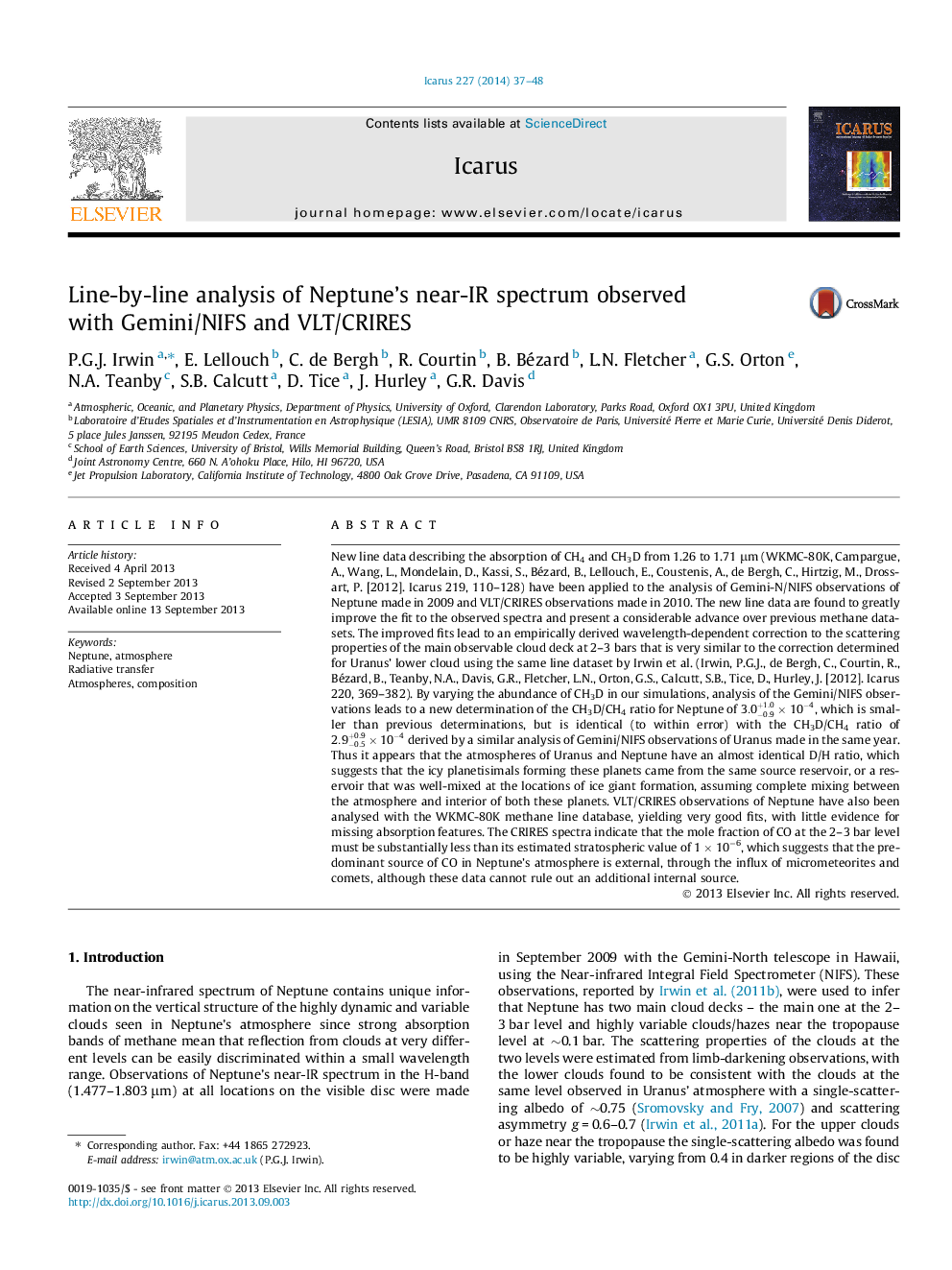| کد مقاله | کد نشریه | سال انتشار | مقاله انگلیسی | نسخه تمام متن |
|---|---|---|---|---|
| 1773257 | 1523563 | 2014 | 12 صفحه PDF | دانلود رایگان |

• Revised WKMC-80K methane line data give very good fit to Neptune H-band spectra.
• Reflectivity of particles in main cloud deck is found to decrease with wavelength from 1.4 to 1.6 μm.
• Neptune’s CH3D/CH4 ratio is determined to be 3.0-0.9+1.0×10-4.
• The abundance of CO at the cloud tops (2–3 bars) is found to be much less than in the stratosphere.
New line data describing the absorption of CH4 and CH3D from 1.26 to 1.71 μm (WKMC-80K, Campargue, A., Wang, L., Mondelain, D., Kassi, S., Bézard, B., Lellouch, E., Coustenis, A., de Bergh, C., Hirtzig, M., Drossart, P. [2012]. Icarus 219, 110–128) have been applied to the analysis of Gemini-N/NIFS observations of Neptune made in 2009 and VLT/CRIRES observations made in 2010. The new line data are found to greatly improve the fit to the observed spectra and present a considerable advance over previous methane datasets. The improved fits lead to an empirically derived wavelength-dependent correction to the scattering properties of the main observable cloud deck at 2–3 bars that is very similar to the correction determined for Uranus’ lower cloud using the same line dataset by Irwin et al. (Irwin, P.G.J., de Bergh, C., Courtin, R., Bézard, B., Teanby, N.A., Davis, G.R., Fletcher, L.N., Orton, G.S., Calcutt, S.B., Tice, D., Hurley, J. [2012]. Icarus 220, 369–382). By varying the abundance of CH3D in our simulations, analysis of the Gemini/NIFS observations leads to a new determination of the CH3D/CH4 ratio for Neptune of 3.0-0.9+1.0×10-4, which is smaller than previous determinations, but is identical (to within error) with the CH3D/CH4 ratio of 2.9-0.5+0.9×10-4 derived by a similar analysis of Gemini/NIFS observations of Uranus made in the same year. Thus it appears that the atmospheres of Uranus and Neptune have an almost identical D/H ratio, which suggests that the icy planetisimals forming these planets came from the same source reservoir, or a reservoir that was well-mixed at the locations of ice giant formation, assuming complete mixing between the atmosphere and interior of both these planets. VLT/CRIRES observations of Neptune have also been analysed with the WKMC-80K methane line database, yielding very good fits, with little evidence for missing absorption features. The CRIRES spectra indicate that the mole fraction of CO at the 2–3 bar level must be substantially less than its estimated stratospheric value of 1 × 10−6, which suggests that the predominant source of CO in Neptune’s atmosphere is external, through the influx of micrometeorites and comets, although these data cannot rule out an additional internal source.
Journal: Icarus - Volume 227, 1 January 2014, Pages 37–48